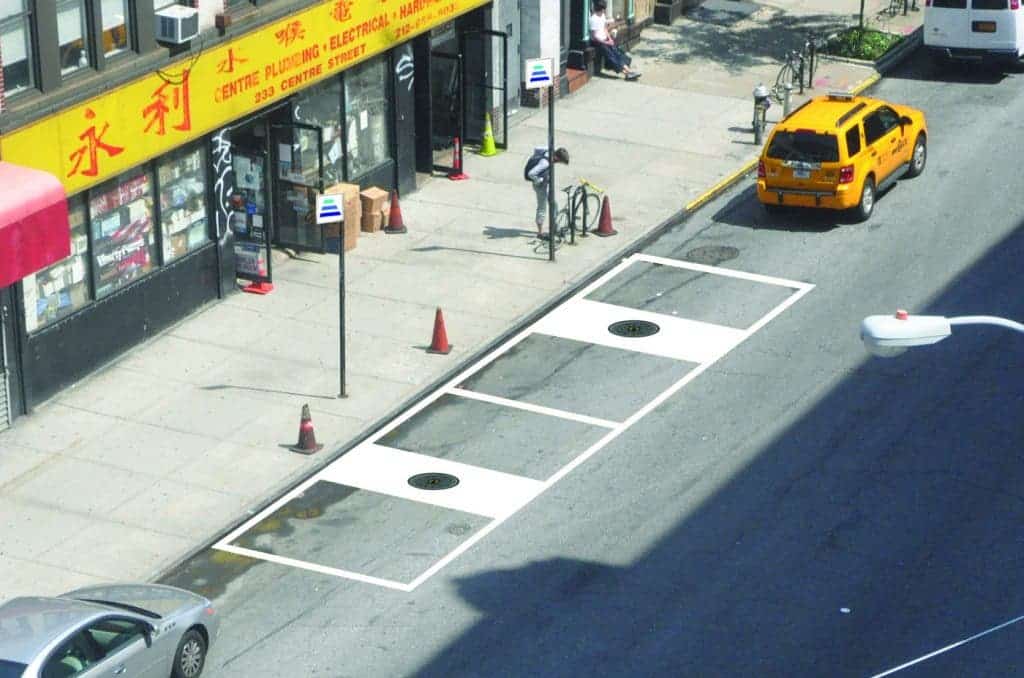A 2013 study by MIT indicates that 53,000 early deaths per year occur because of vehicle emissions. Cleaner, more efficient vehicles have been a priority for automakers for years now, but these cars still directly pollute anyway. Electric vehicles, while with current technology still indirectly pollute through their carbon footprint during manufacturing and charging (remember electricity in most parts of the world is still generated through burning coal!), are clearly the cleanest alternative. There are many drawbacks, however, to EVs that keep many from adopting them. One big issue many car owners face that keeps them from turning ‘green’ is autonomy. A nifty and creative solution proposed by New York startup HEVO aims to solve this issue. Their plan is to create special, reserved parking spaces where a sort of manhole wirelessly charges the car parked underneath it.
All electric vehicles have a driving range of roughly 200 km. That’s more than enough to cover the average daily travel needs of an user, around 47 km. Still many are frightened they’ll get stranded in the middle of the street or can’t pull their car off the drive way the next morning if they forget to plug their vehicle for charging. What if you could charge as you drive? That’s really bold, but very hard to implement. Right now, it’s more practical to be able to charge where you park.
What if most parking spots were equipped with mini charging stations? Certainly, this kind of initiative would help solve a lot of headaches and maybe convince a lot of people to switch to electric. Wireless charging would be ideal since you don’t want charging cords littered throughout the city which is already hectic enough.
HEVO Power from HEVO Power on Vimeo.
The system proposed by HEVO provides 220V using induction and up to 10 KW of energy from the manhole charging pad to the vehicle. The vehicle needs to be already equipped with a receiver along the drive train to absorb the power. According to HEVO, 10 hours of charge would be enough to provide 175 miles worth of travel. For now, HEVO plans to open its first two charging stations early next year in lower Manhattan, servicing New York University’s fleet. This kind of service won’t be limited for fleets though. Individual EV car owners would be able to reserve an electric-charged parking space, too.
Wireless charging seems to work best for transit systems. Last year I reported how the world’s first wirelessly charged transit bus was commissioned , and South Korea is currently experimenting with a pilot program that charges municipal buses directly from the road using similar wireless technology.










